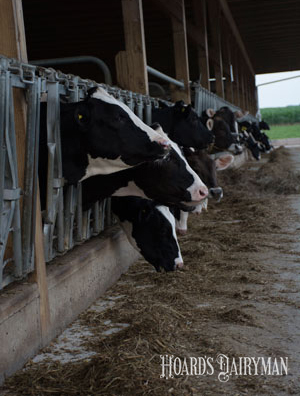
A feeding study conducted at the University of Wisconsin Marshfield Agricultural Research Station also took a look at heifer stocking density and behavior. USDA’s Wayne Coblentz shared some of those results at the University of Wisconsin-Extension “Raising Quality Dairy Heifers” meeting held in Kimberly, Wis., last month.
Heifers in the trial were housed in pens stocked at 100 percent, 125 percent, and 150 percent. Both the freestalls and the feedbunk were limited in the overstocked situations.
As one might expect, animals in the 100 percent stocked pens spent more time lying down than standing up. Coblentz noted that as stocking density rose, the number of heifers inactively standing in the pens grew. This was particularly evident after 10 p.m.
They also noticed that more heifers spent time at the feedbunk eating in overstocked pens during the late night and early morning hours.
Another behavior they recorded was that more heifers perched in stalls that were already occupied in the overstocked pens, perhaps an indication that they were waiting for the stall to become available. And as sunrise approached, more heifers were willing to lie in the alleys in the overstocked pens.
To assess cleanliness, independent scorers used a five-point hygiene scale. Within pen variability of hygiene scores rose sharply with overstocking, but overall scores were very acceptable, Coblentz stated. Alley scrapers were used to clean the pens and likely helped with animal cleanliness.
Overall, Coblentz reported a three-fourths hour spike in standing time in heifers overstocked at 150 percent compared to those in 100 percent stocking situations. While providing a stall for every heifer may not be feasible for all farms, this data shows that heifer behaviors are impacted when pens become more crowded, which may in turn affect performance.








